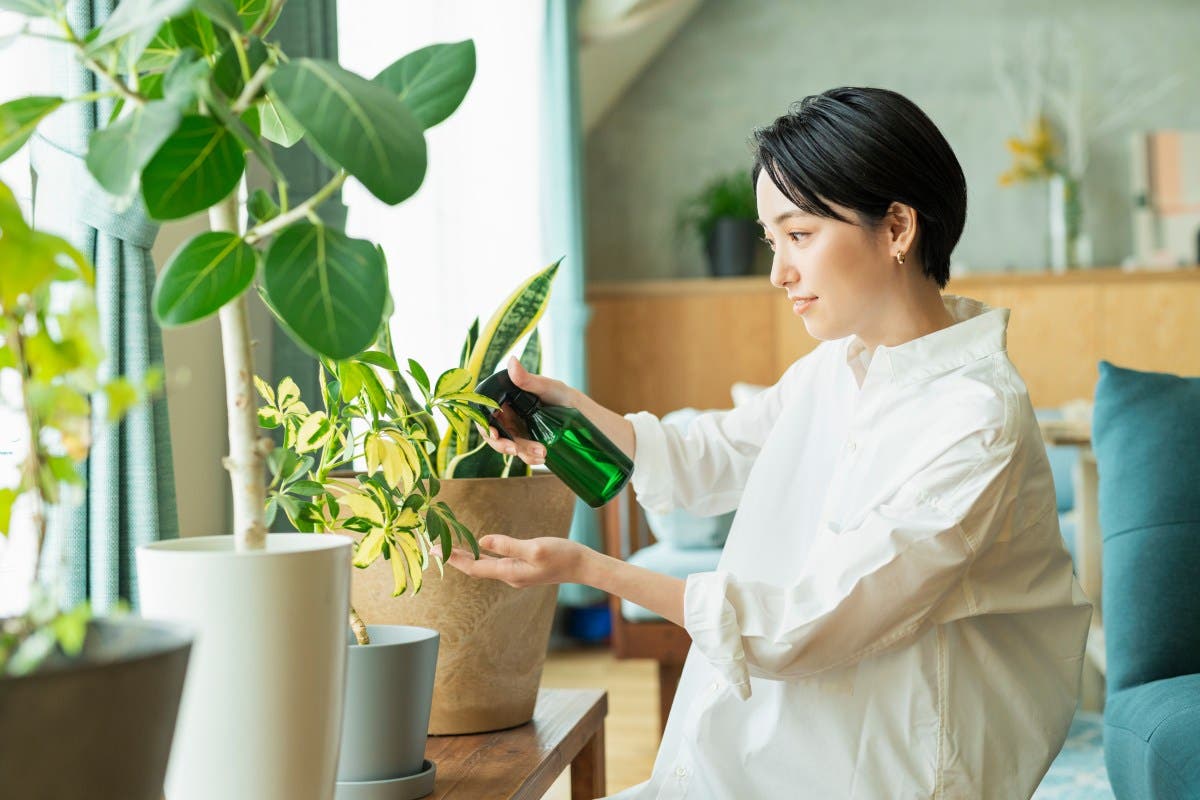Researchers have revealed the ideal amount of potted plants for our wellbeing, with their analysis surprising them by revealing that too much decorative nature can actually hinder mental health rather than help.
The team from California’s Stanford University developed a new method to quantify varying “doses” of greenery and wooden materials. They used this method in a simulated office environment to explore the effects of indoor nature on people’s wellbeing. While a few potted plants and a window with a view of trees enhanced participants’ perceived restoration and sense of belonging, stress levels increased when the greenery in the office became more crowded.
“I wasn’t expecting this at all,” said study author and civil engineer Eva Bianchi. “Around 60 percent total greenery and wood had the highest stress increase, which was contradictory to prior work.”
Previous research suggested that indoor nature, such as plants, reduces stress. However, these studies either compared responses with and without nature or relied on subjective assessments of greenery levels. “There’s such a huge body of literature, but we can’t actually synthesize it because no one’s using the same methods,” explained Prof. Sarah Billington, another author of the study.
To better understand responses to different doses of indoor nature, the team developed a software called the Nature View Potential tool, which calculates how much nature people see, on average, inside a given space. Using this tool alongside 3D modeling software, they designed 11 digital conference rooms with varying levels of wood, greenery, and visible nature views.
The researchers recruited 412 participants, each assigned to one of the virtual rooms. Participants were instructed to imagine the room as their new workplace, where they would undertake professional development tasks. The team then induced stress through various tasks, such as solving difficult anagrams and counting down from 1022 to zero in increments of 13.
Before and after these tasks, participants completed questionnaires to assess their wellbeing. Bianchi explained, “I told them they scored below average and that they wouldn’t get paid,” to increase pressure—though all participants were paid in the end.
Analysis revealed that a greenery dose of about 20 percent produced the strongest effects in promoting relaxation and a sense of belonging. “Any nature helps, but to see a real improvement, you need to reach around that level,” said Billington.
Conversely, rooms with the most greenery—around 60 percent, filled with plants, living walls, and wooden ceilings—led to increased stress among participants. Some even commented that there were “too many plants” or that it would be a “nightmare to try to get anything done.” This suggests that an overload of natural elements indoors might be overwhelming and counterproductive.
Interestingly, wooden furniture and features alone appeared to have no significant effect on wellbeing measures. The researchers noted that this might be due to the digital representation of wood not being realistic enough, as previous studies have found effects from real wooden features.
An important finding was that a sense of “connection” to nature plays a key role in experiencing wellbeing benefits from indoor greenery. Bianchi emphasized, “You don’t just put a bunch of nature inside the space; you ensure that the nature you include will make occupants feel connected to it.”
The authors also highlighted that the optimal amount of nature likely depends on the specific space and its intended wellbeing outcomes. “However, our results suggest that a dose of around 20 percent greenery may maximize feelings of belonging, fascination, and being away, while limiting reductions in coherence and positive arousal,” they noted in their publication.
Beyond providing practical guidance for individuals, the team hopes their findings will inform design recommendations for housing, schools, workplaces, and hospitals. As urbanization increases, they stress the importance of further research—particularly field studies—on indoor exposure to nature and its impact on wellbeing.
Newsweek has reached out to the researchers for additional comments. If you have a tip for a health story or questions about plants and wellbeing, feel free to contact us.
https://www.newsweek.com/scientists-reveal-the-ideal-amount-of-pot-plants-for-wellness-11001654



